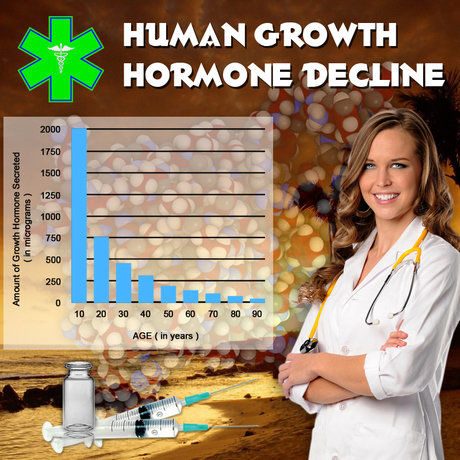Introduction
The health and well-being of American men are significantly influenced by a myriad of socioeconomic factors. These factors, ranging from income and education to employment and social support systems, play a critical role in determining health outcomes. This article delves into how socioeconomic determinants impact men's health in the U.S., exploring the challenges and potential strategies for improvement.
The Role of Income and Economic Stability
Income is a fundamental socioeconomic factor that directly affects access to healthcare, nutrition, and living conditions, all of which are crucial for maintaining good health. Men with higher incomes generally have better access to quality healthcare services, which can lead to earlier detection and treatment of diseases. Conversely, men from lower socioeconomic backgrounds often face barriers to healthcare, resulting in poorer health outcomes. For instance, research indicates that men in lower income brackets are more likely to suffer from chronic conditions such as heart disease and diabetes due to limited access to preventive care and healthy food options.
Education and Health Literacy
Education is another critical determinant of health. Higher levels of education are associated with better health literacy, enabling men to make informed decisions about their health. Men with higher education levels are more likely to engage in preventive health behaviors, such as regular check-ups and screenings, which can significantly reduce the risk of developing serious health conditions. In contrast, men with lower education levels may lack the knowledge and resources needed to manage their health effectively, leading to higher rates of preventable diseases.
Employment and Occupational Health
Employment status and the nature of one's job can also impact men's health. Stable employment provides not only financial security but also access to health insurance, which is vital for regular medical care. However, certain occupations, particularly those involving manual labor or hazardous conditions, can pose significant health risks. Men working in such environments are at a higher risk of occupational injuries and long-term health issues, such as respiratory diseases and musculoskeletal disorders. Moreover, unemployment or underemployment can lead to stress and mental health problems, further exacerbating health disparities.
Social Support and Community Resources
Social support systems and community resources play a crucial role in men's health. Strong social networks can provide emotional support, encourage healthy behaviors, and offer practical assistance in times of need. Men with robust social support are more likely to seek medical care and adhere to treatment plans. Additionally, access to community resources, such as fitness centers and health education programs, can enhance men's ability to maintain a healthy lifestyle. However, men from disadvantaged socioeconomic backgrounds may have limited access to these resources, which can hinder their health and well-being.
Strategies for Improvement
Addressing the impact of socioeconomic factors on men's health requires a multifaceted approach. Policymakers can implement initiatives to improve access to affordable healthcare and education, particularly for men from lower socioeconomic backgrounds. Employers can promote workplace wellness programs and provide safe working conditions to reduce occupational health risks. Community organizations can offer support services and health education to empower men to take control of their health. By addressing these socioeconomic determinants, it is possible to improve health outcomes and reduce disparities among American men.
Conclusion
Socioeconomic factors play a pivotal role in shaping the health outcomes of American men. Income, education, employment, and social support systems are all critical determinants that influence access to healthcare and the ability to maintain a healthy lifestyle. By understanding and addressing these factors, it is possible to develop targeted interventions that can improve the health and well-being of men across the socioeconomic spectrum. As a society, it is essential to work towards reducing these disparities and ensuring that all men have the opportunity to lead healthy, fulfilling lives.
Contact Us For A Fast And Professional Response

- Understanding and Treating Erectile Dysfunction: A Comprehensive Guide for American Men [Last Updated On: March 2nd, 2025] [Originally Added On: March 2nd, 2025]
- Men's Health and Supplements: Benefits, Types, and Safe Usage for American Males [Last Updated On: March 17th, 2025] [Originally Added On: March 17th, 2025]
- Gut Health's Impact on American Males: Microbiome, Mental Health, and Disease Prevention [Last Updated On: March 17th, 2025] [Originally Added On: March 17th, 2025]
- Osteoporosis in Men: Understanding Risks and Enhancing Bone Health Strategies [Last Updated On: March 18th, 2025] [Originally Added On: March 18th, 2025]
- Top Fitness Trends Transforming American Men's Health and Wellness [Last Updated On: March 18th, 2025] [Originally Added On: March 18th, 2025]
- Sleep Apnea in American Men: Symptoms, Risks, and Management Strategies [Last Updated On: March 19th, 2025] [Originally Added On: March 19th, 2025]
- Mental Health Stigma in American Men: Impact and Strategies for Change [Last Updated On: March 20th, 2025] [Originally Added On: March 20th, 2025]
- Understanding and Overcoming Male Infertility: Causes, Diagnosis, and Treatment Options [Last Updated On: March 20th, 2025] [Originally Added On: March 20th, 2025]
- Meditation's Rise in U.S.: Enhancing Men's Mental Health and Resilience [Last Updated On: March 21st, 2025] [Originally Added On: March 21st, 2025]
- Stress and Heart Health in American Men: Impacts and Management Strategies [Last Updated On: March 21st, 2025] [Originally Added On: March 21st, 2025]
- Hydration's Vital Role in American Men's Health and Performance [Last Updated On: March 21st, 2025] [Originally Added On: March 21st, 2025]
- Exercise: A Vital Strategy for American Men Managing Diabetes [Last Updated On: March 21st, 2025] [Originally Added On: March 21st, 2025]
- Physical Activity: A Vital Tool for Cancer Prevention in American Men [Last Updated On: March 21st, 2025] [Originally Added On: March 21st, 2025]
- Strength Training Benefits for American Men: Physical, Mental, and Metabolic Health [Last Updated On: March 21st, 2025] [Originally Added On: March 21st, 2025]
- Work-Life Balance: Key to American Men's Health and Well-being [Last Updated On: March 22nd, 2025] [Originally Added On: March 22nd, 2025]
- Effective Strategies for American Men to Quit Smoking and Improve Health [Last Updated On: March 22nd, 2025] [Originally Added On: March 22nd, 2025]
- Understanding and Managing Allergies in Men: Strategies for Health and Well-being [Last Updated On: March 22nd, 2025] [Originally Added On: March 22nd, 2025]
- Obesity and Cancer Risks in American Men: Insights and Prevention Strategies [Last Updated On: March 23rd, 2025] [Originally Added On: March 23rd, 2025]
- Swimming Boosts Men's Health: Cardiovascular, Muscle, Weight, and Mental Benefits [Last Updated On: March 24th, 2025] [Originally Added On: March 24th, 2025]
- Promoting Men's Mental Health: The Importance of Regular Screening in America [Last Updated On: March 24th, 2025] [Originally Added On: March 24th, 2025]
- Managing Anxiety in American Men: Tools, Techniques, and Holistic Approaches [Last Updated On: March 24th, 2025] [Originally Added On: March 24th, 2025]
- Effective Depression Treatment Options for American Men: Therapy, Medication, and Lifestyle [Last Updated On: March 24th, 2025] [Originally Added On: March 24th, 2025]
- Tai Chi: Enhancing Health and Wellness for American Men [Last Updated On: March 24th, 2025] [Originally Added On: March 24th, 2025]
- Alcohol's Impact on Liver Health: A Guide for American Males [Last Updated On: March 24th, 2025] [Originally Added On: March 24th, 2025]
- Varicose Veins in American Men: Causes, Symptoms, and Treatment Options [Last Updated On: March 25th, 2025] [Originally Added On: March 25th, 2025]
- Asthma in Men: Symptoms, Management, and Lifestyle Impact [Last Updated On: March 25th, 2025] [Originally Added On: March 25th, 2025]
- Caffeine's Multifaceted Impact on American Men's Health: Benefits and Risks [Last Updated On: March 25th, 2025] [Originally Added On: March 25th, 2025]
- Mental Health Days: Essential for American Men's Well-Being and Productivity [Last Updated On: March 25th, 2025] [Originally Added On: March 25th, 2025]
- Sleep and Weight Management: A Guide for American Males [Last Updated On: March 25th, 2025] [Originally Added On: March 25th, 2025]
- Gout in American Men: Causes, Symptoms, and Effective Management Strategies [Last Updated On: March 25th, 2025] [Originally Added On: March 25th, 2025]
- High Cholesterol in American Men: Risks, Impacts, and Management Strategies [Last Updated On: March 25th, 2025] [Originally Added On: March 25th, 2025]
- Dietary Strategies for Enhancing Prostate Health in American Men [Last Updated On: March 25th, 2025] [Originally Added On: March 25th, 2025]
- Kidney Stones in American Men: Prevention, Management, and Treatment Strategies [Last Updated On: March 25th, 2025] [Originally Added On: March 25th, 2025]
- Plant-Based Diets: Health Benefits for American Men [Last Updated On: March 26th, 2025] [Originally Added On: March 26th, 2025]
- Dietary Fiber: Essential for Digestive Health, Weight Management, and Disease Prevention in Men [Last Updated On: March 26th, 2025] [Originally Added On: March 26th, 2025]
- Eye Health Crucial for American Men: Exams Detect Early Disease Signs [Last Updated On: March 26th, 2025] [Originally Added On: March 26th, 2025]
- Dental Health's Crucial Role in Men's Overall Well-being and Disease Prevention [Last Updated On: March 26th, 2025] [Originally Added On: March 26th, 2025]
- Hemorrhoids in Men: Causes, Symptoms, and Effective Management Strategies [Last Updated On: March 26th, 2025] [Originally Added On: March 26th, 2025]
- Stroke Risks in American Men: Understanding and Prevention Strategies [Last Updated On: March 26th, 2025] [Originally Added On: March 26th, 2025]
- Annual Physicals: Vital for Men's Health and Disease Prevention in the U.S. [Last Updated On: March 26th, 2025] [Originally Added On: March 26th, 2025]
- Men's Mental Health in the Workplace: Challenges and Strategies for Support [Last Updated On: March 27th, 2025] [Originally Added On: March 27th, 2025]
- Stress and Digestive Health in American Males: Insights and Management Strategies [Last Updated On: March 27th, 2025] [Originally Added On: March 27th, 2025]
- Cycling Benefits for American Men: Health, Fitness, and Well-being [Last Updated On: March 27th, 2025] [Originally Added On: March 27th, 2025]
- Seasonal Affective Disorder in American Men: Symptoms, Impact, and Holistic Treatment Approaches [Last Updated On: March 28th, 2025] [Originally Added On: March 28th, 2025]
- Social Connections: Enhancing Mental Health Resilience in American Men [Last Updated On: March 28th, 2025] [Originally Added On: March 28th, 2025]
- Proactive Health Strategies for American Men: Screenings, Lifestyle, and Support [Last Updated On: March 29th, 2025] [Originally Added On: March 29th, 2025]
- Pilates Benefits for American Men: Core Strength, Flexibility, and Mental Health [Last Updated On: March 29th, 2025] [Originally Added On: March 29th, 2025]
- Hiking Benefits for Men: Enhancing Physical, Mental, and Social Health [Last Updated On: March 29th, 2025] [Originally Added On: March 29th, 2025]
- Arthritis in American Men: Prevention, Management, and Mental Health Strategies [Last Updated On: March 30th, 2025] [Originally Added On: March 30th, 2025]
- Insomnia's Impact on Men's Health: Causes, Strategies, and Solutions [Last Updated On: March 30th, 2025] [Originally Added On: March 30th, 2025]
- Diet and Heart Health: Essential Guide for American Men [Last Updated On: March 31st, 2025] [Originally Added On: March 31st, 2025]
- Pollution's Impact on American Men: Health Risks and Preventive Strategies [Last Updated On: March 31st, 2025] [Originally Added On: March 31st, 2025]
- Migraines in Men: Symptoms, Triggers, and Effective Management Strategies [Last Updated On: March 31st, 2025] [Originally Added On: March 31st, 2025]
- Antioxidants: Vital for American Men's Health and Disease Prevention [Last Updated On: April 1st, 2025] [Originally Added On: April 1st, 2025]
- Men's Mental Health: Breaking Stigma Through Education and Support [Last Updated On: April 4th, 2025] [Originally Added On: April 4th, 2025]
- Rowing: A Comprehensive Fitness Solution for American Men's Health [Last Updated On: April 5th, 2025] [Originally Added On: April 5th, 2025]
- Martial Arts: Enhancing Men's Health and Well-being in America [Last Updated On: April 7th, 2025] [Originally Added On: April 7th, 2025]
- Alcohol Use and Mental Health: A Critical Issue Among American Males [Last Updated On: April 9th, 2025] [Originally Added On: April 9th, 2025]
- Managing Panic Attacks: Strategies and Insights for American Men's Health [Last Updated On: April 9th, 2025] [Originally Added On: April 9th, 2025]
- Skin Cancer Risks and Prevention Strategies for American Men [Last Updated On: April 9th, 2025] [Originally Added On: April 9th, 2025]
- Community Influence on Men's Health: Social Ties, Resources, and Cultural Factors [Last Updated On: April 9th, 2025] [Originally Added On: April 9th, 2025]
- Back Pain in American Men: Causes, Prevention, and Holistic Management Strategies [Last Updated On: April 9th, 2025] [Originally Added On: April 9th, 2025]
- Men's Hearing Health: Risks, Prevention, and Technological Solutions [Last Updated On: April 11th, 2025] [Originally Added On: April 11th, 2025]
- Technology's Impact on Men's Health: Fitness, Telemedicine, and Mental Wellness in the U.S. [Last Updated On: April 11th, 2025] [Originally Added On: April 11th, 2025]
- IBS in American Men: Symptoms, Diagnosis, and Management Strategies [Last Updated On: April 11th, 2025] [Originally Added On: April 11th, 2025]
- Running's Multifaceted Health Benefits for American Men: A Comprehensive Guide [Last Updated On: April 12th, 2025] [Originally Added On: April 12th, 2025]
- Essential Vitamins for American Men's Health and Vitality [Last Updated On: April 13th, 2025] [Originally Added On: April 13th, 2025]
- Obesity and Diabetes in American Men: Risks, Impacts, and Management Strategies [Last Updated On: April 13th, 2025] [Originally Added On: April 13th, 2025]
- Transforming Men's Health: Tailored Mental Health Awareness Campaigns for American Men [Last Updated On: April 14th, 2025] [Originally Added On: April 14th, 2025]
- Diet and Mental Health: Nutritional Strategies for American Males' Well-being [Last Updated On: April 15th, 2025] [Originally Added On: April 15th, 2025]
- CrossFit: Boosting American Men's Health and Fitness Holistically [Last Updated On: April 16th, 2025] [Originally Added On: April 16th, 2025]
- Mental Health First Aid: Empowering American Men to Overcome Stigma and Seek Support [Last Updated On: April 16th, 2025] [Originally Added On: April 16th, 2025]
- Joint Pain in Men: Causes, Prevention, and Management Strategies [Last Updated On: April 17th, 2025] [Originally Added On: April 17th, 2025]
- Basketball's Impact on Men's Health: Fitness, Mental Well-being, and Community Benefits [Last Updated On: April 18th, 2025] [Originally Added On: April 18th, 2025]
- Soccer's Impact on Men's Health: Cardiovascular, Mental, and Physical Benefits [Last Updated On: April 19th, 2025] [Originally Added On: April 19th, 2025]
- Lung Cancer in American Men: Risks, Prevention, and Early Detection Strategies [Last Updated On: April 19th, 2025] [Originally Added On: April 19th, 2025]
- Family Support Enhances Health and Wellbeing in American Men: A Comprehensive Analysis [Last Updated On: April 19th, 2025] [Originally Added On: April 19th, 2025]
- Rising Mental Health Awareness Among U.S. Males: Breaking Stigma and Fostering Support [Last Updated On: April 23rd, 2025] [Originally Added On: April 23rd, 2025]
- Prostate Health Guide: Understanding, Managing, and Treating Conditions in American Men [Last Updated On: April 24th, 2025] [Originally Added On: April 24th, 2025]
- Enhancing Cardiovascular Fitness: A Holistic Guide for American Men [Last Updated On: April 24th, 2025] [Originally Added On: April 24th, 2025]

















